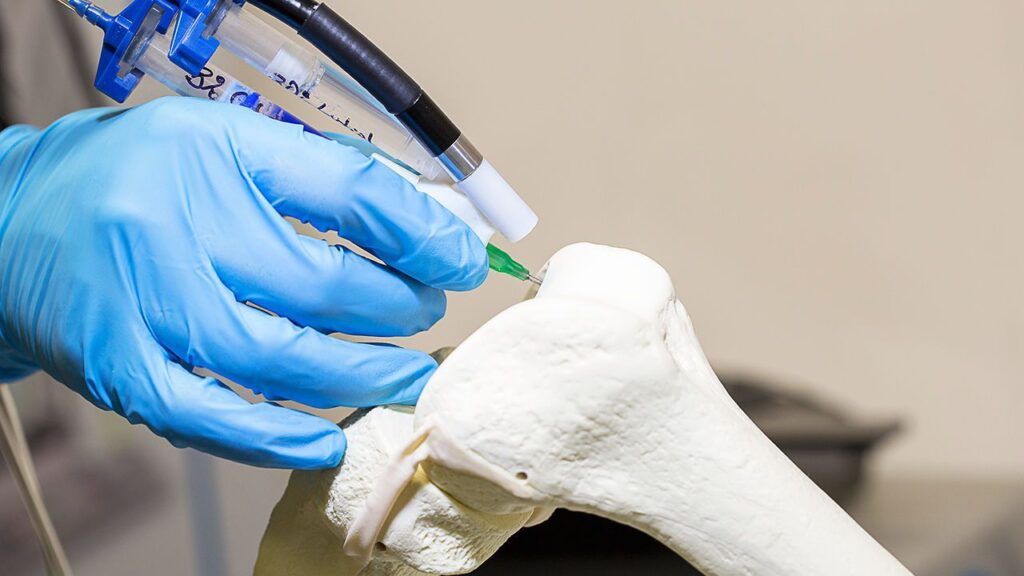
The global polyether ether ketone (PEEK) interbody devices market is set to grow significantly, with its valuation expected to rise from USD 2,207.89 million in 2023 to USD 4,525 million by 2033. This growth is underpinned by a robust 7.4% compound annual growth rate (CAGR), reflecting the increasing adoption of PEEK interbody devices in advanced medical applications.
PEEK is a high-performance semi-crystalline engineering thermoplastic renowned for its exceptional properties, including superior chemical resistance, low moisture uptake, outstanding fire performance, and exceptional mechanical strength across a broad temperature range. These qualities, combined with its good dimensional stability, make PEEK an ideal material for interbody devices used in spinal surgeries and orthopedic applications.
The rising prevalence of spinal disorders and an increasing number of spinal fusion surgeries are driving demand for PEEK interbody devices. These devices offer advantages such as biocompatibility, radiolucency for clear imaging, and tailored mechanical properties that mimic natural bone, promoting successful patient outcomes. Furthermore, ongoing advancements in device design and manufacturing are enabling innovations tailored to specific clinical needs.
With the market on a strong growth trajectory, significant opportunities exist for manufacturers, researchers, and medical device companies to leverage the expanding applications of PEEK. As healthcare infrastructure and surgical techniques continue to advance globally, PEEK interbody devices are poised to remain at the forefront of modern spinal care.
Key Characteristics of PEEK
PEEK is a high-performance semi-crystalline engineering thermoplastic known for its:
- Superior Chemical Resistance: Effective against various chemicals, making it suitable for medical applications.
- Low Moisture Uptake: Minimizes the risk of degradation in humid environments.
- Outstanding Fire Performance: High resistance to ignition and flame spread.
- Exceptional Mechanical Strength: Maintains strength across a wide temperature range.
- Good Dimensional Stability: Retains shape and size under varying conditions.
Key Growth Drivers
- Increasing Demand in Healthcare: The rising prevalence of degenerative disc diseases and the need for spinal surgeries are driving the demand for PEEK interbody devices.
- Technological Advancements: Innovations in PEEK manufacturing processes and product designs enhance their application in spinal surgery and other medical fields.
- Growing Acceptance of PEEK Materials: Increasing recognition of PEEK as a biocompatible material suitable for long-term implantation is boosting its adoption.
Market Dynamics
- Product Applications: PEEK interbody devices are primarily used in orthopedic and spinal surgeries due to their mechanical properties and biocompatibility.
- Regional Insights:
- The United States is anticipated to be the largest market due to high surgical volumes and significant healthcare expenditure.
- China is also expected to show rapid growth, supported by advancements in healthcare infrastructure and increasing awareness of spinal health.
Challenges
Despite the positive outlook, the market faces challenges such as:
- High Manufacturing Costs: The production costs associated with PEEK materials can be significant, potentially limiting their use in some applications.
- Regulatory Hurdles: Navigating the regulatory landscape for medical devices can be complex and time-consuming.
Prominent Polyether Ether Ketone (PEEK) Interbody Devices Manufacturers
- Zimmer Biomet Holdings. Inc.
- Medtronic Plc.
- Stryker Corporation
- B. Braun Melsungen AG
- SeaSpine Holdings Corporation
- Polymer Company Limited Shandong Weigao Group Medical
- Alphatec Holdings Inc.
- Xtant Medical Holdings, Inc.
- Life Spine, Inc.
A Detailed Full Report
Key Segments
By Product:
- Posterolateral Fusion Devices
- Interbody Fusion Devices
- Anterior Lumbar Interbody Fusion Devices (ALIF)
- Extreme Lateral Interbody Fusion Devices (XLIF)
- Posterior Lumbar Interbody Fusion Devices (PLIF)
- Transforaminal Lumbar Interbody Fusion Devices (TLIF)
- Other Devices
By End Use:
- Hospitals
- Ambulatory Surgical Centers
- Specialty Clinics
By Region:
- North America
- Latin America
- Europe
- East Asia
- South Asia & Pacific
- The Middle East & Africa (MEA)
Author By:
Sabyasachi Ghosh (Associate Vice President at Future Market Insights, Inc.) holds over 12 years of experience in the Healthcare, Medical Devices, and Pharmaceutical industries. His curious and analytical nature helped him shape his career as a researcher.
Identifying key challenges faced by clients and devising robust, hypothesis-based solutions to empower them with strategic decision-making capabilities come naturally to him. His primary expertise lies in areas such as Market Entry and Expansion Strategy, Feasibility Studies, Competitive Intelligence, and Strategic Transformation.
Holding a degree in Microbiology, Sabyasachi has authored numerous publications and has been cited in journals, including The Journal of mHealth, ITN Online, and Spinal Surgery News.
About Future Market Insights (FMI)
Future Market Insights, Inc. (ESOMAR certified, recipient of the Stevie Award, and a member of the Greater New York Chamber of Commerce) offers profound insights into the driving factors that are boosting demand in the market. FMI stands as the leading global provider of market intelligence, advisory services, consulting, and events for the Packaging, Food and Beverage, Consumer Technology, Healthcare, Industrial, and Chemicals markets. With a vast team of over 400 analysts worldwide, FMI provides global, regional, and local expertise on diverse domains and industry trends across more than 110 countries.
Contact Us:
Future Market Insights Inc.
Christiana Corporate, 200 Continental Drive,
Suite 401, Newark, Delaware – 19713, USA
T: +1-347-918-3531
For Sales Enquiries: sales@futuremarketinsights.com
Website: https://www.futuremarketinsights.com
LinkedIn| Twitter| Blogs | YouTube